In small museums around Kosovo lie hidden narratives and whispered echoes of a devastating war of more than 20 years ago. Those small museums stand as poignant testaments to the harrowing consequences of war and highlight the need for a national war museum, that preserves and displays the entire war history in one place.
Kosovo holds hundreds of commemorative statues for the Kosovo Liberation Army, but there is nowhere you can go to find the full history of the 1998 – 1999 war. While small museums have emerged to tell the harrowing losses of individual families and communities, there is a very real need for a national war crimes museum in Kosovo, to capture the full narrative about what happened during the war.
In 2018, BIRN reported that Prishtina was planning to open a war crimes museum that would capture experiences from all of the different communities in Kosovo. It would include evidence of rape, disappearances, deportations, and destruction of property.
However, five years later, no such museum exists in Prishtina or anywhere else in Kosovo. The Ministry of Culture also does not keep a list of private museums focused on the war. Still, in the absence of a single war crimes museum, there are several museums worth visiting to understand the impact the war had on individual families and communities.
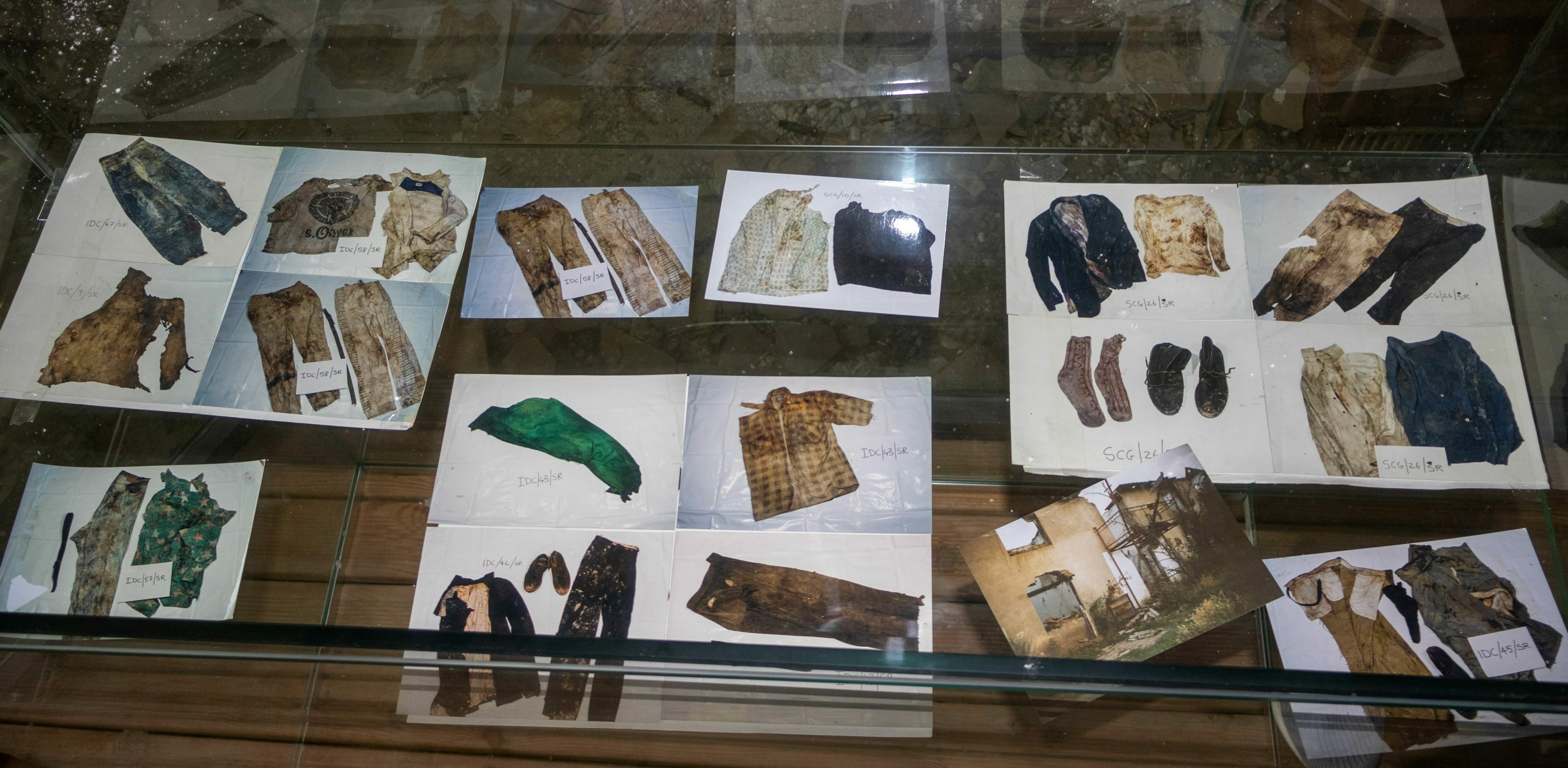
The Berisha Family Museum in Suhareka. Photo: Afrim Ejupi/BIRN
While the Adem Jashari Memorial Complex is probably the most well-known museum, Prishtina Insight visited some of the other small museums around Kosovo. Unfortunately, no matter how hard they try to showcase the consequences of the war, these museums do not receive sufficient financial assistance to employ full-time staff or to develop English translations for foreign visitors.
Health Museum in the Memorial Complex in Penuhë, Podujevë
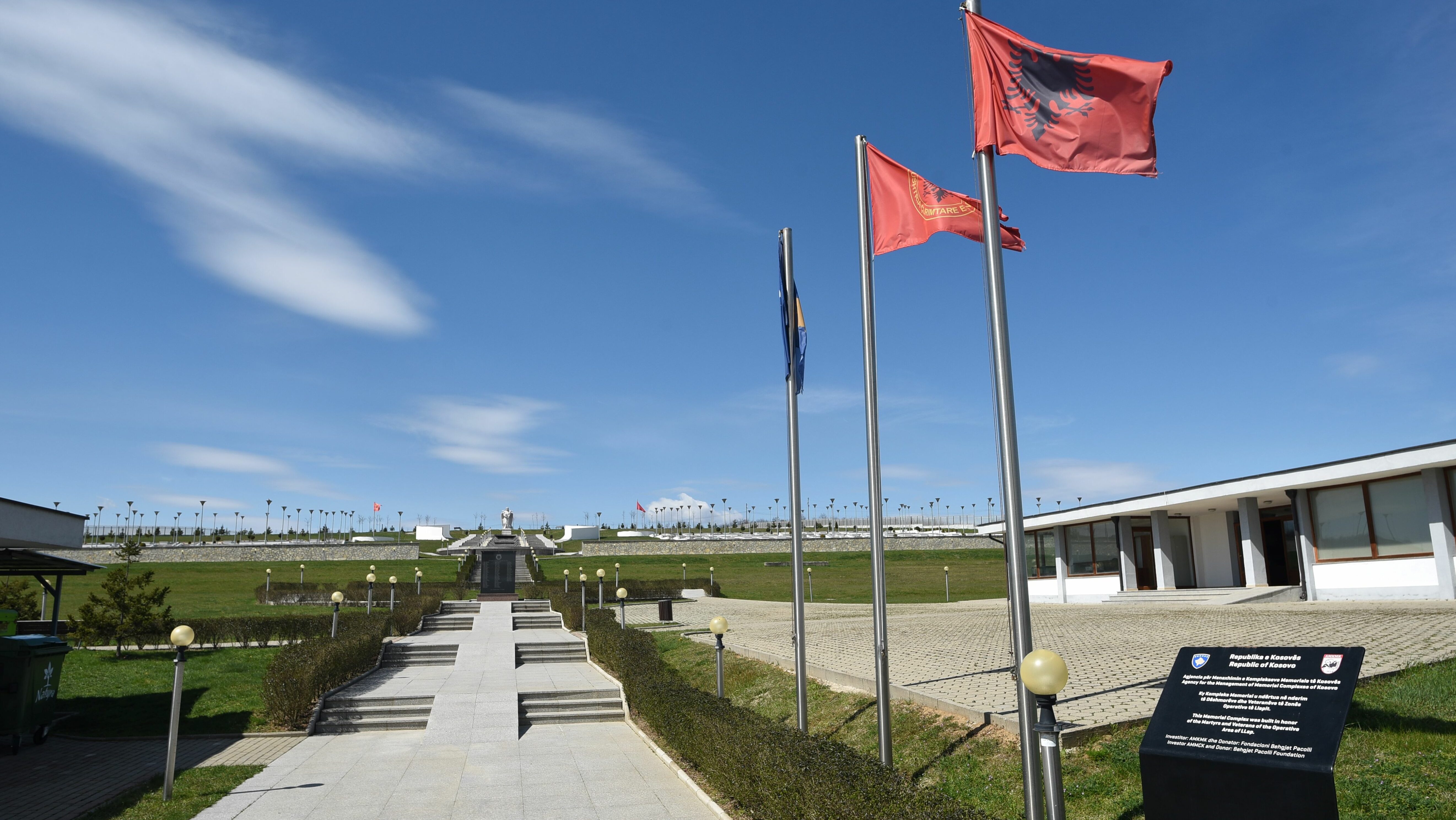
Health Museum in the Memorial Complex in Penuhë, Podujevë. Photo: Denis Sllovinja/BIRN
Address: Mustafë Shala, Penuhë, Podujevë, 11000
Opening hours: 10:00 -17:00
The walls of the Health Museum in Podujevë are filled with photographs of operations being performed on soldiers and civilians during the war. There is more focus on bloodied wounds than on the faces of the people. This museum houses graphic images intended to shock visitors. While jarring, it is also essential to witness the horrors of war.
The Health Museum in Podujevë memorializes the Military hospital in Podujevë that served the Operational Area of Llap. More than 700 operations were performed on soldiers and civilians between September 15, 1998 and April 30, 1999. This museum, which opened in May 2022, is small. The museum contains only two rooms and a martyr cemetery for 154 soldiers from the Llap Operational Zone. Only 114 have been buried so far.
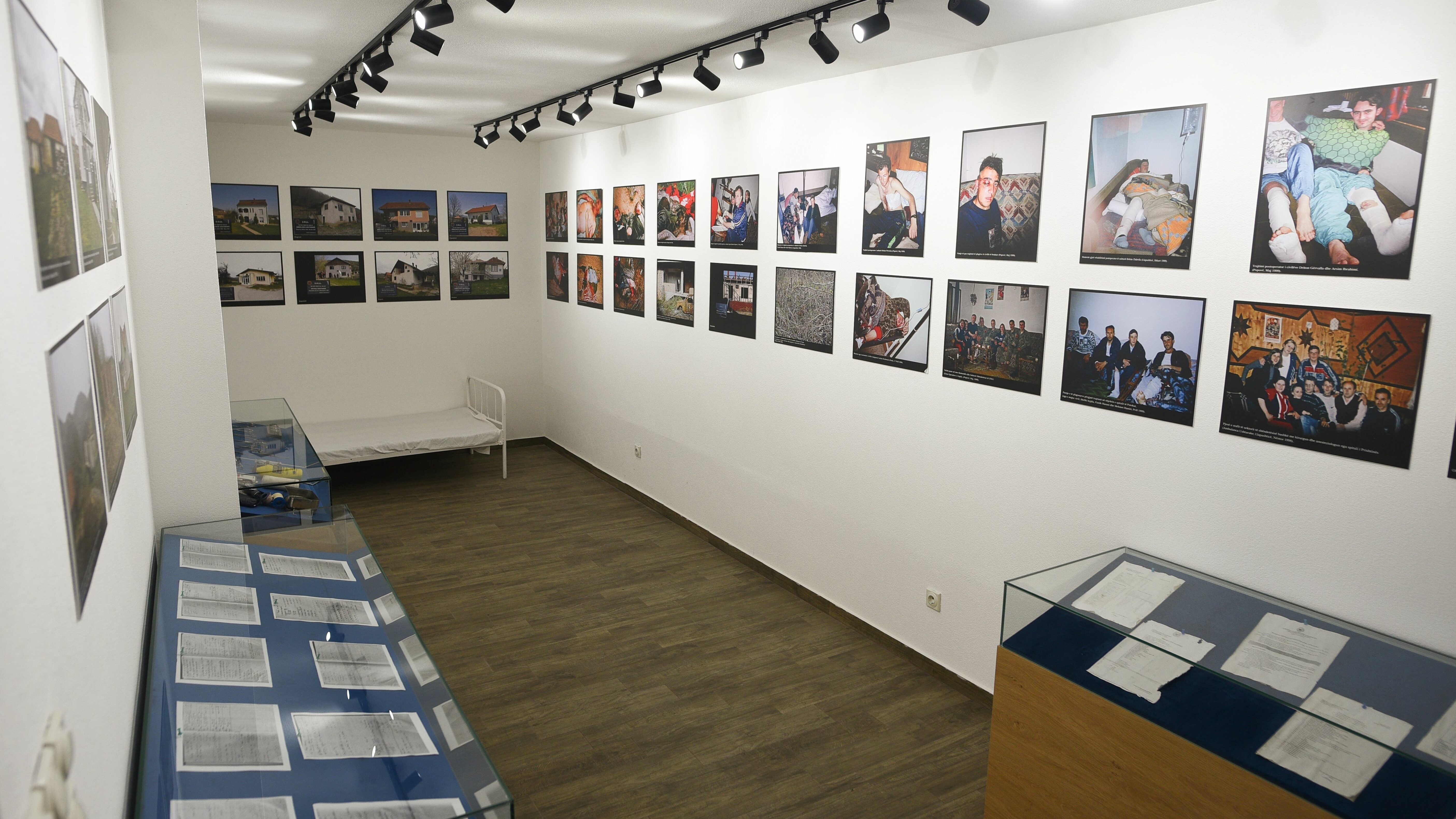
Health Museum in the Memorial Complex in Penuhë, Podujevë. Photo: Denis Sllovinja/BIRN
The first room in the museum is a reconstruction of a surgical room from the Military hospital in Potok, a village in Podujevë, and features the real surgical tools used. While the hospital mainly operated on soldiers, injured civilians were also treated there. One haunting photo shows a child whose hand was torn off during shelling by Serbian forces.
In the second room, a collection of photos brings to life the underground ‘house hospital’ system. Houses across the Llap Operational Zone functioned as treatment centers, where injured soldiers would be tended to. This unofficial network of houses operated in secret for their own protection. Other photos show the brutal injuries suffered by soldiers and civilians, and the doctors who looked after them.
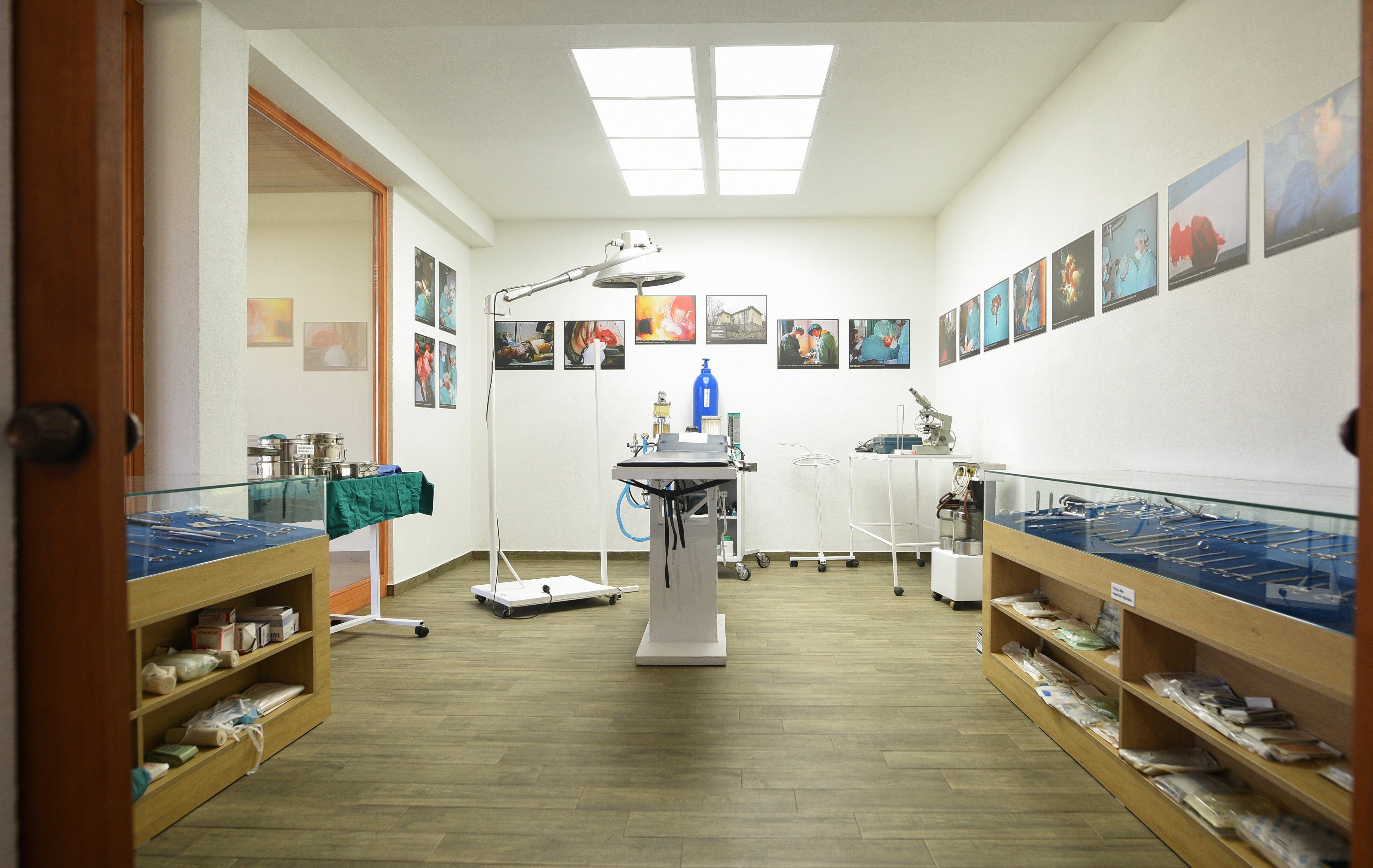
Health Museum in the Memorial Complex in Penuhë, Podujevë. Photo: Denis Sllovinja/BIRN
All of these photographs and surgical tools were collected by Doctor Skender Murati, who performed operations at the Military hospital in Podujevë. He donated the authentic supplies and photographs to the museum, so that they could be shared with the public.
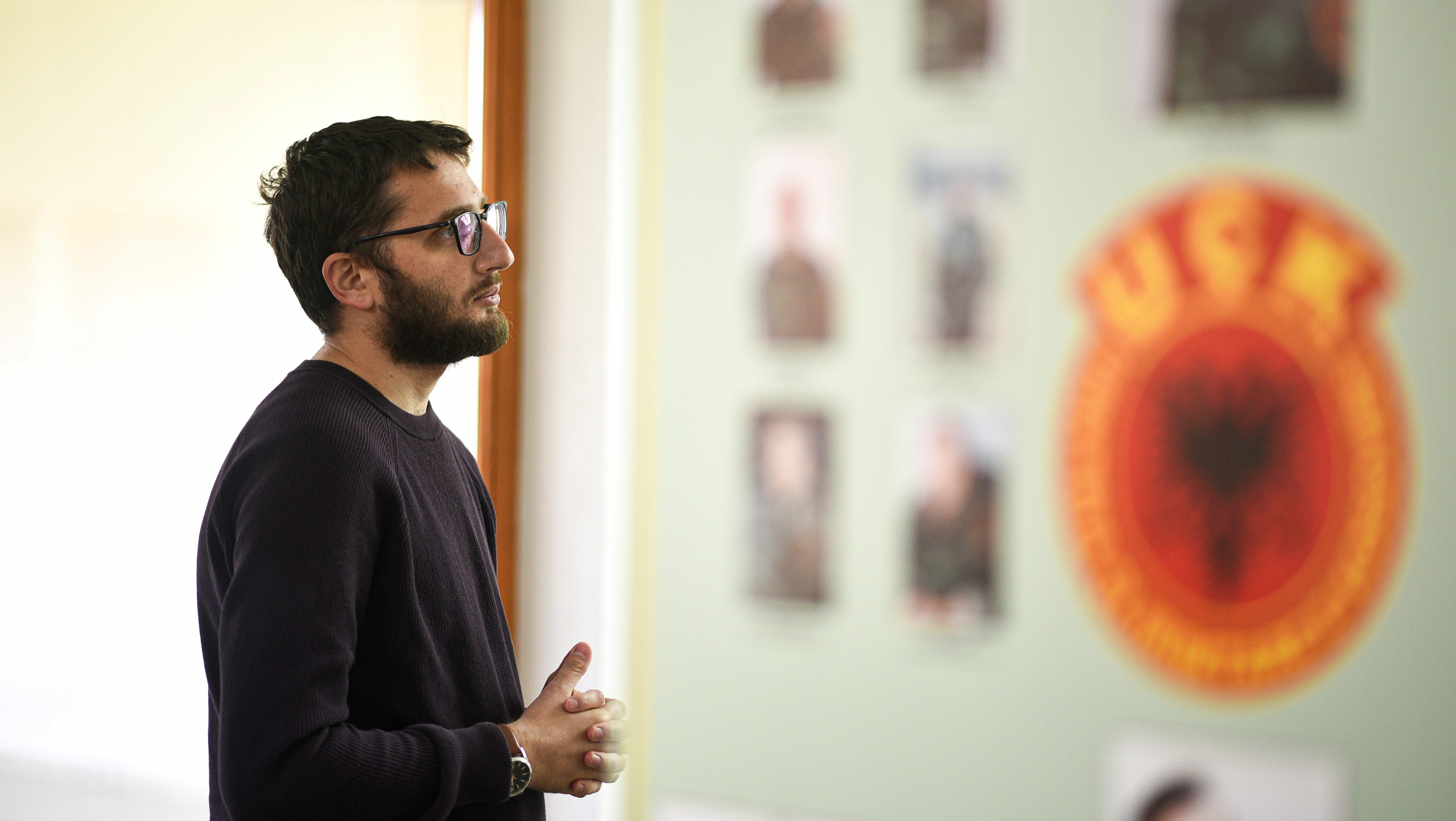
Faton Pllana, the guide for the Health Museum and Military Complex in Podujevë. Photo: Denis Sllovinja/BIRN
Though there are plans to further expand the museum to include weapons and uniforms belonging to the martyred soldiers, this will be dependent on funding from public institutions and donations from family members of soldiers.
Currently, about 100 people visit the museum each month. Although the information is only written in Albanian, the museum employs a full-time guide who speaks English in order to explain the displays to international visitors. Faton Pllana, the guide for the Health Museum and Military Complex in Podujevë, urges more people to visit “so they can see the suffering and sacrifice that came with our freedom and independence.”
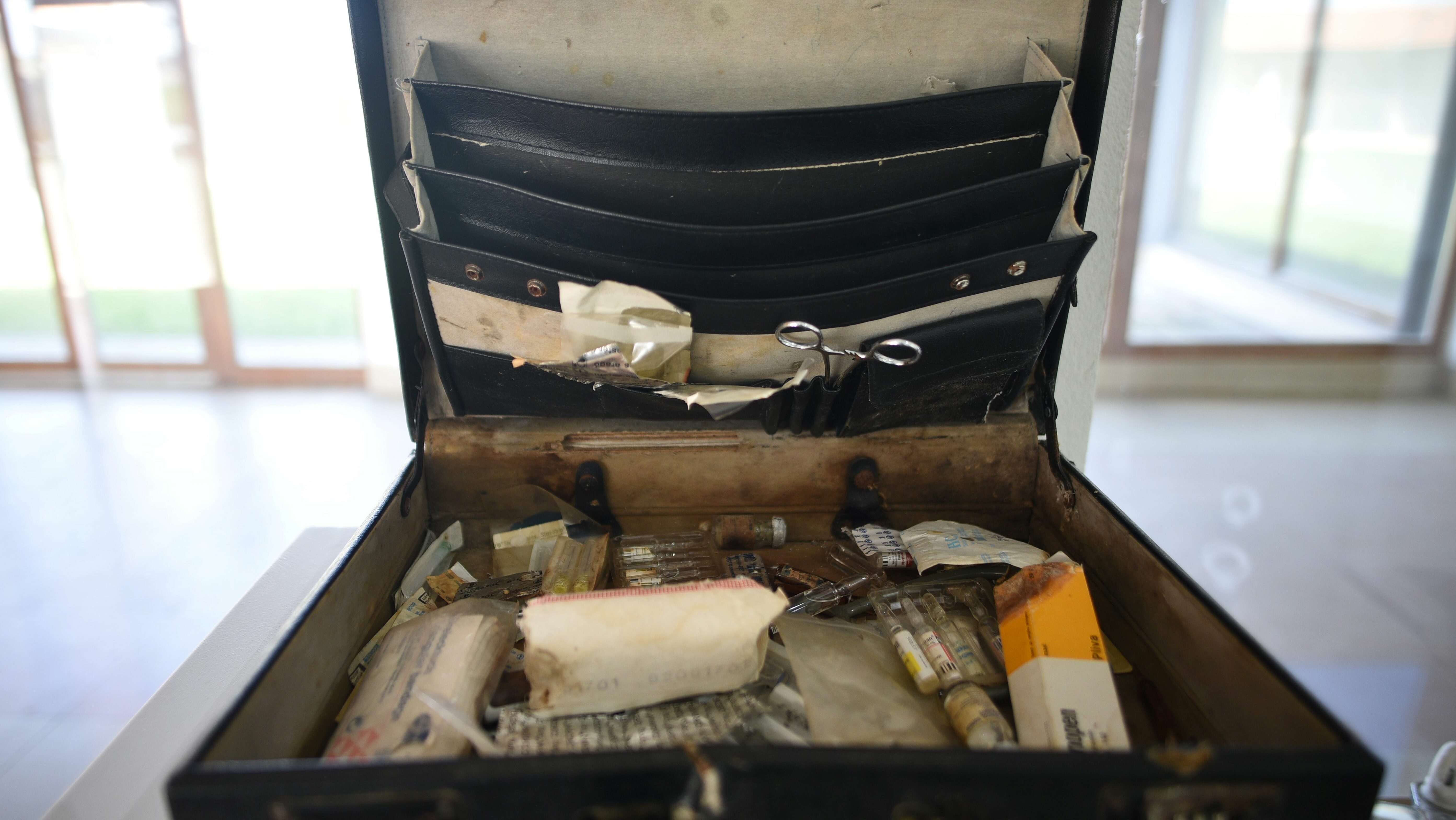
Health Museum in the Memorial Complex in Penuhë, Podujevë. Photo: Denis Sllovinja/BIRN
Pllana believes that, “ these small museums can fill the void until a national museum is established,” but “a museum that includes the whole war would attract more people, including foreigners and delegations.” A museum about the hospital operations in Llap highlights an important story, but provides an incomplete picture of the war.
Traditional House of Qerkezi Family
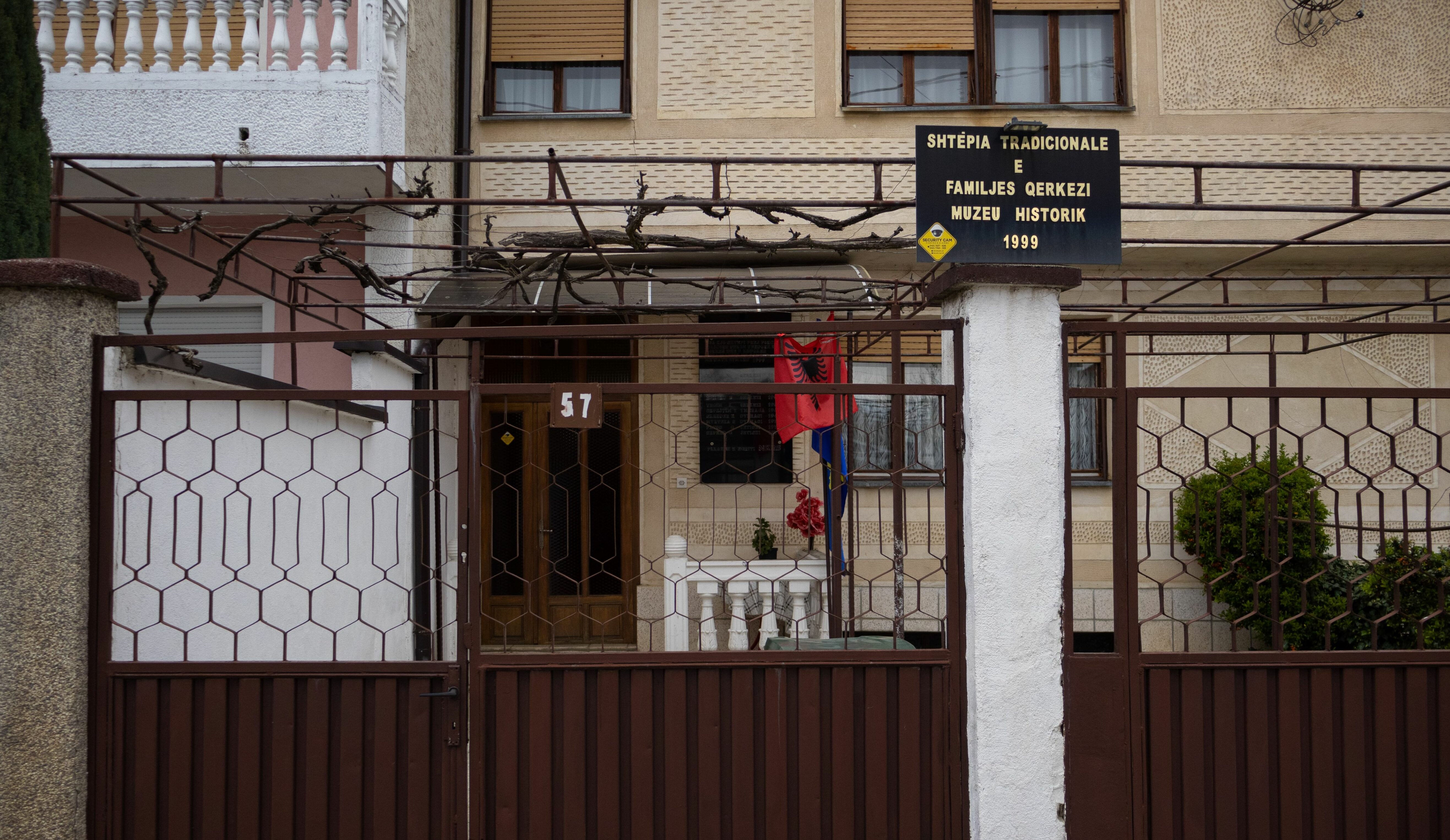
Traditional House of Qerkezi Family , Gjakovë. Photo: Afrim Ejupi/BIRN
Address: 7 Martirët Qerkezi XK, Gjakovë 50000
Opening hours: Call in advance, +383 49 141 083
On March 27, 1999, Serb police officers abducted and murdered Ferdonije Qerkezi’s husband, Halim, and their four sons, Artan, Edmond, Armend and Ardian. Only two of her sons’ bodies have been found.
Today Ferdonije Qerkezi lives alone in the same home that her family was so abruptly taken from in 1999. She has converted the second floor of her home into a museum in memory of her husband and sons. Sheer plastic covers the beds, clothes, and belongings of the family. Photos of the once happy family decorate the walls. It is as if they disappeared only yesterday and are still expected to return.
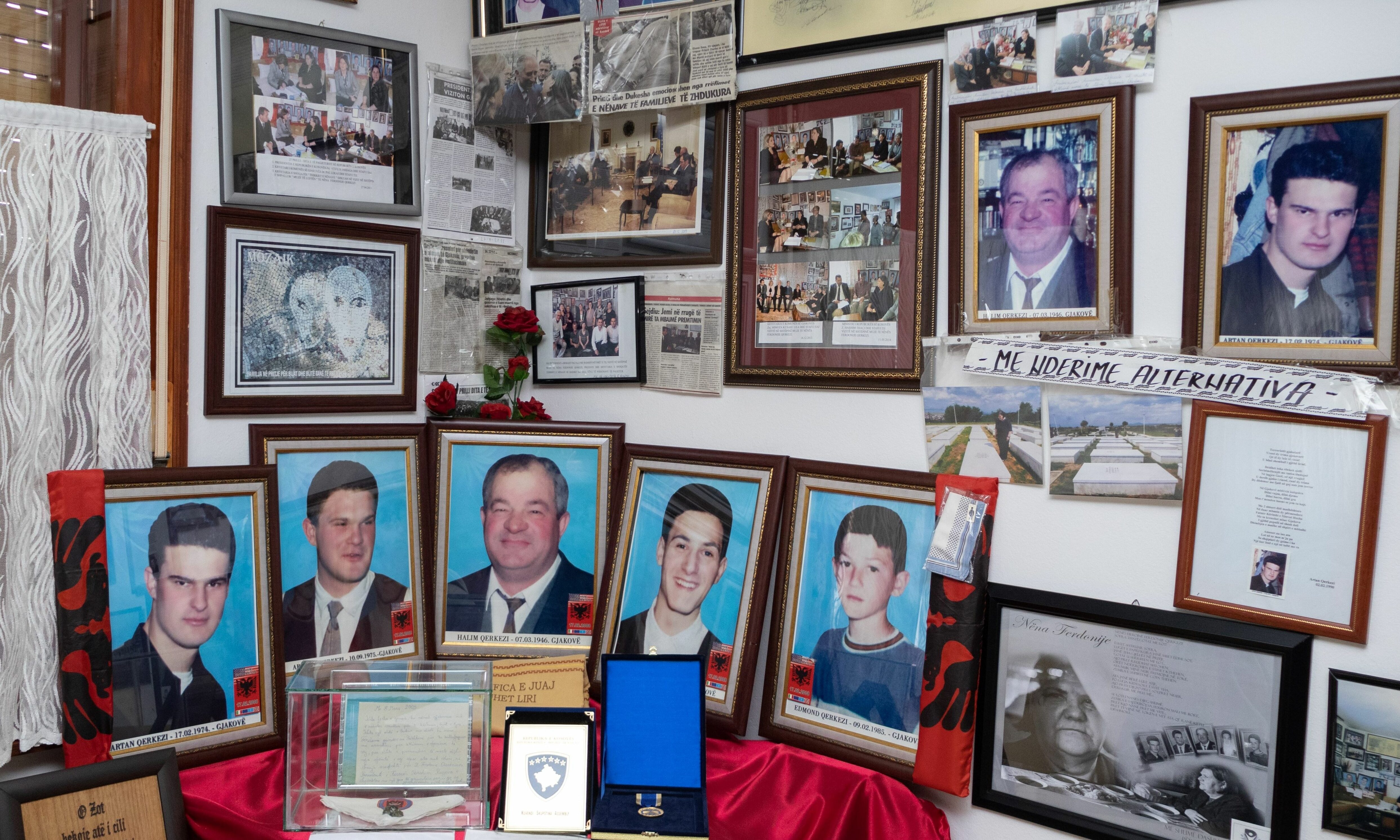
Traditional House of Qerkezi Family , Gjakovë. Photo: Afrim Ejupi/BIRN
The house is heavy with the suffering of Ferdonije Qerkezi.
When Prishtina Insight visited her, a few days had passed since the anniversary of the abduction of her loved ones. Ferdonije Qerkezi appeared exhausted and sorrowful, but allowed us to explore her museum. In a hushed tone, while gazing at the surrounding pictures, she confided in us that she had “very little energy remaining.”
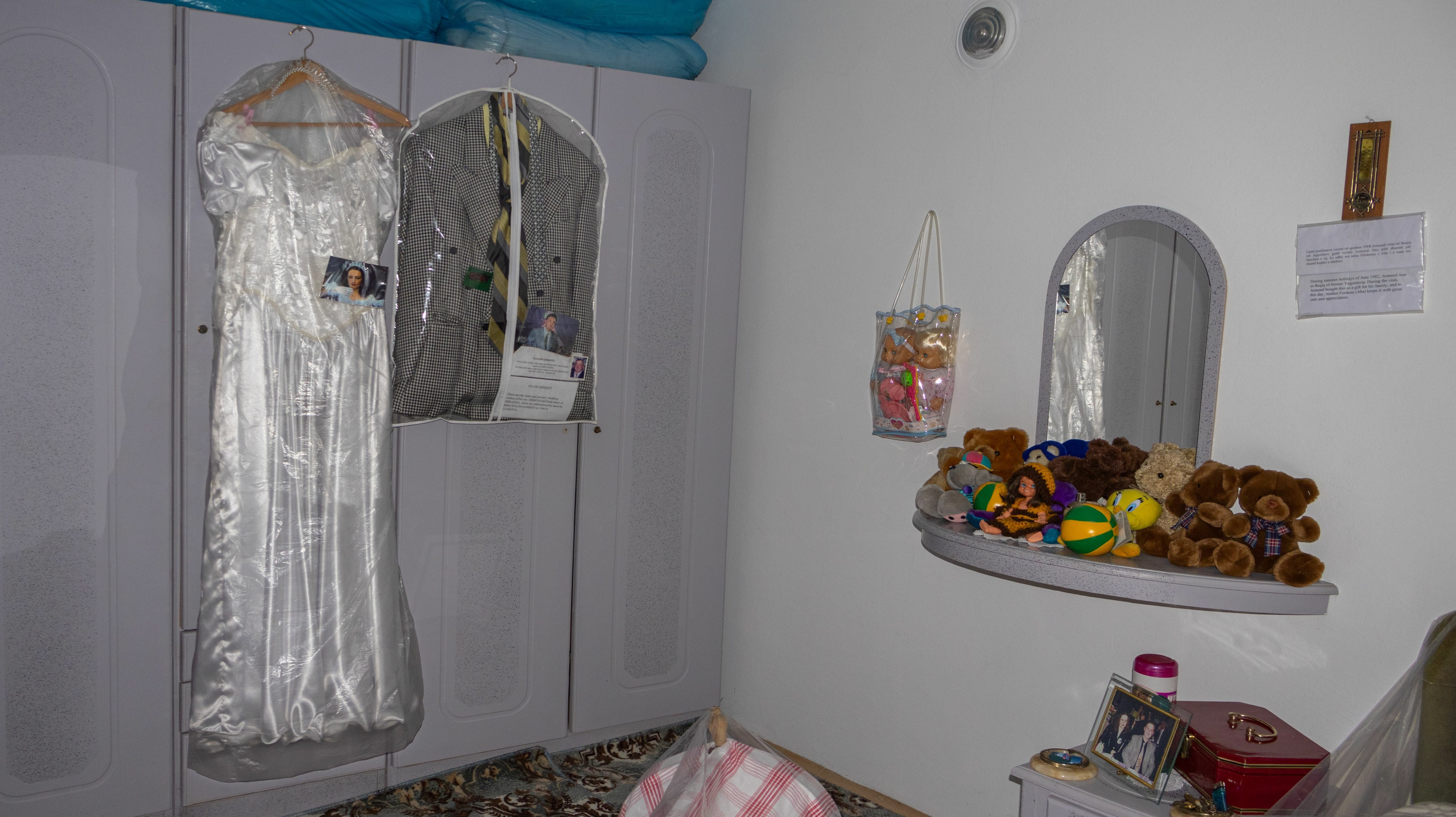
Traditional House of Qerkezi Family, Gjakovë. Photo: Afrim Ejupi/BIRN
The sense of grief and loss is overwhelming, almost unbearable. Ferdonije, and her house museum, are seen as a symbol of the hundreds of Kosovar families waiting for the remains of their family members to be found and returned.
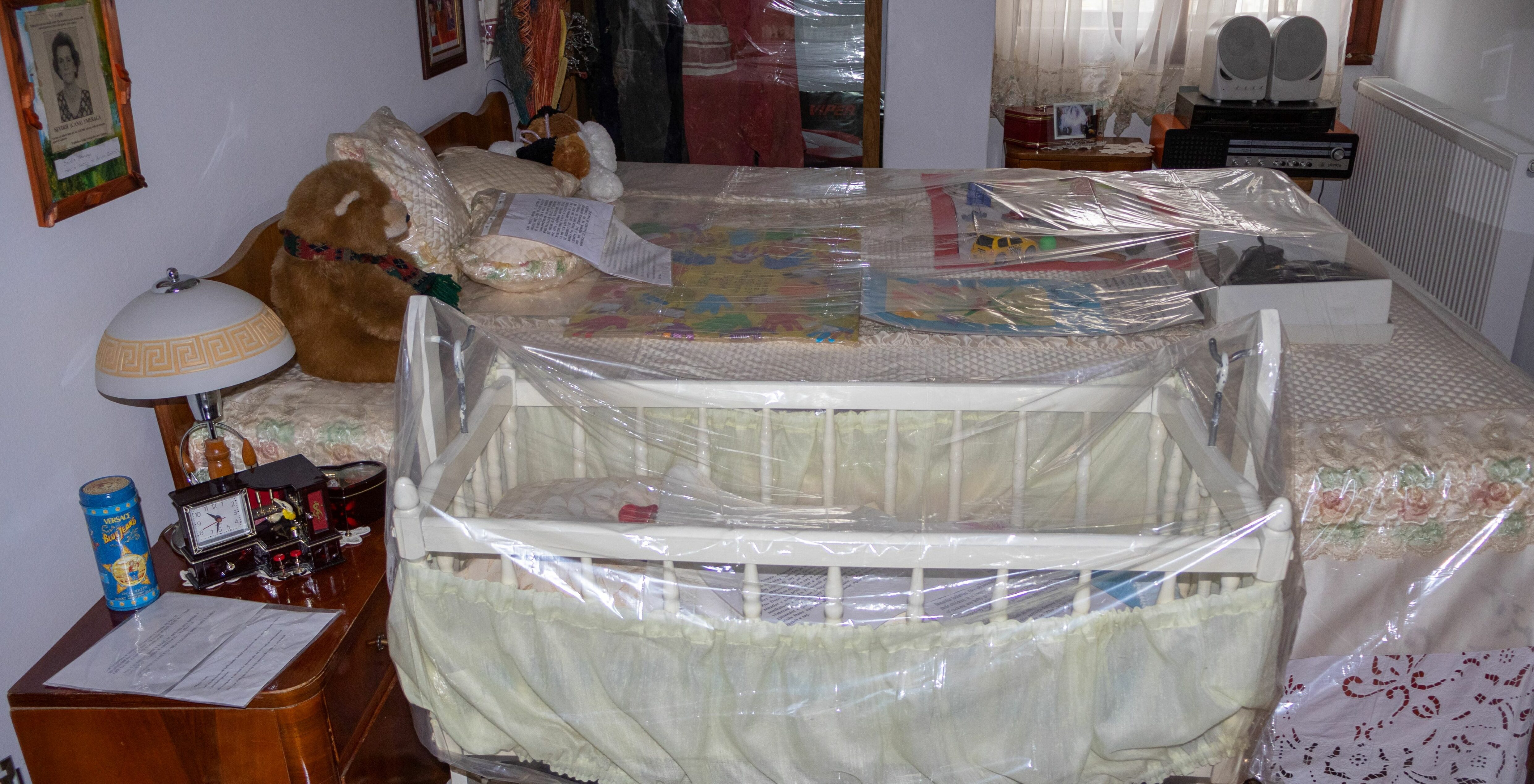
Traditional House of Qerkezi Family , Gjakovë. Photo: Afrim Ejupi/BIRN
Although Ferdonije Qerkezi speaks only Albanian, the belongings of the family, the photographs, and the articles about her family’s story are in Albanian and English. This museum is necessary to visit to understand how lives were forever changed by the events of the war, and the pain of families who are still waiting for information on their missing loved ones.
Museum at the Martyrs' Memorial in Morina
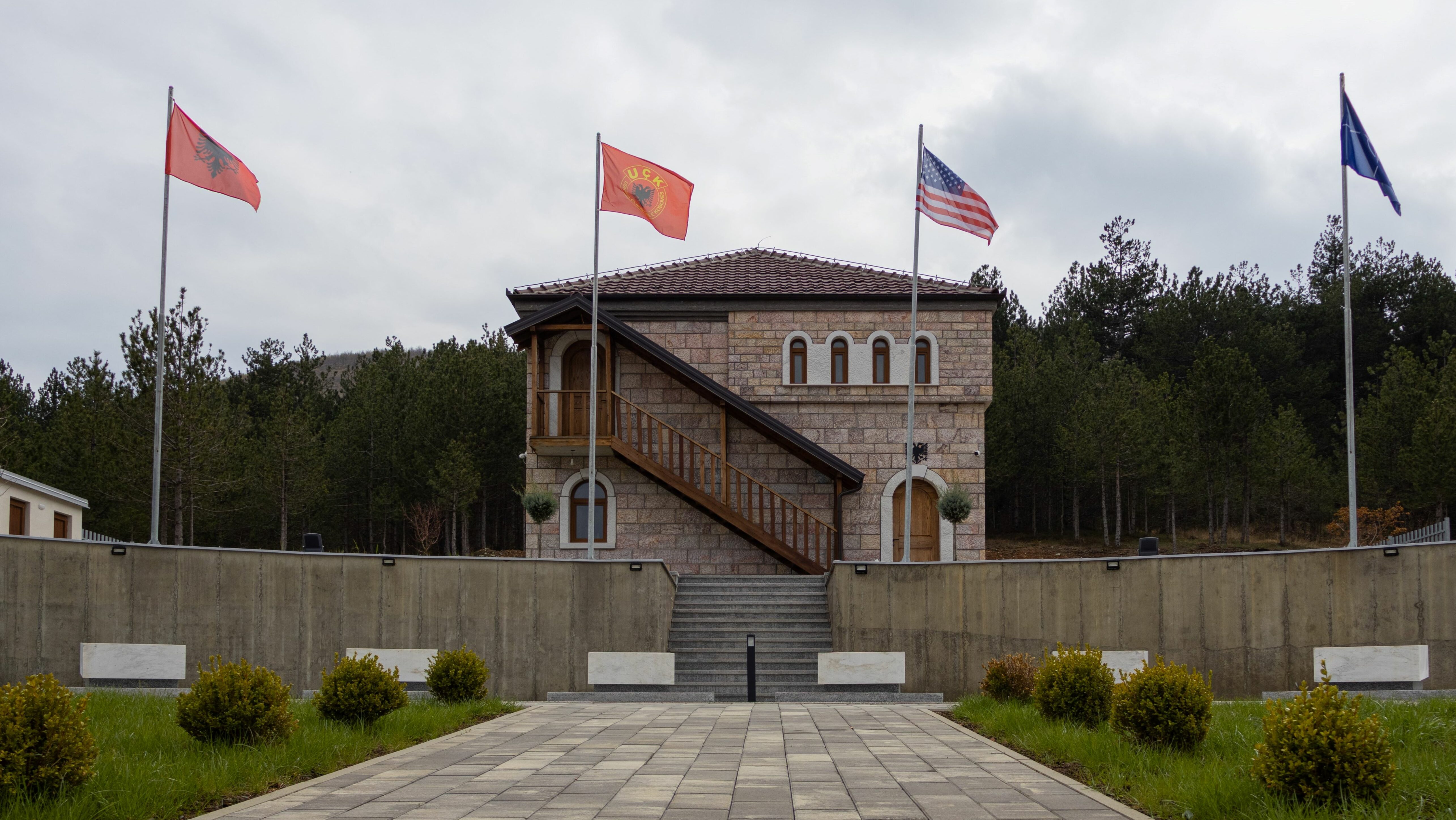
Museum at the Martyrs' Memorial in Morina, Gjakovë. Photo: Afrim Ejupi/BIRN
Address: Eliot Engel 50000 Morinë, Gjakovë
Hours: Call in advance, + 383 48 149 944
One of the items exhibited at the Museum at the Martyrs’ Memorial in Morina is a mine-thrower that once belonged to the martyr Sylejman Abdyli. After the war, his mother discovered it and kept it hidden until she eventually brought it to the museum.
“My mother informed us that she had something to contribute, which took us by surprise because we did not know that she had something of Sylejman to bring there,” Sylejman’s brother Ismajl Abdyli once commented.
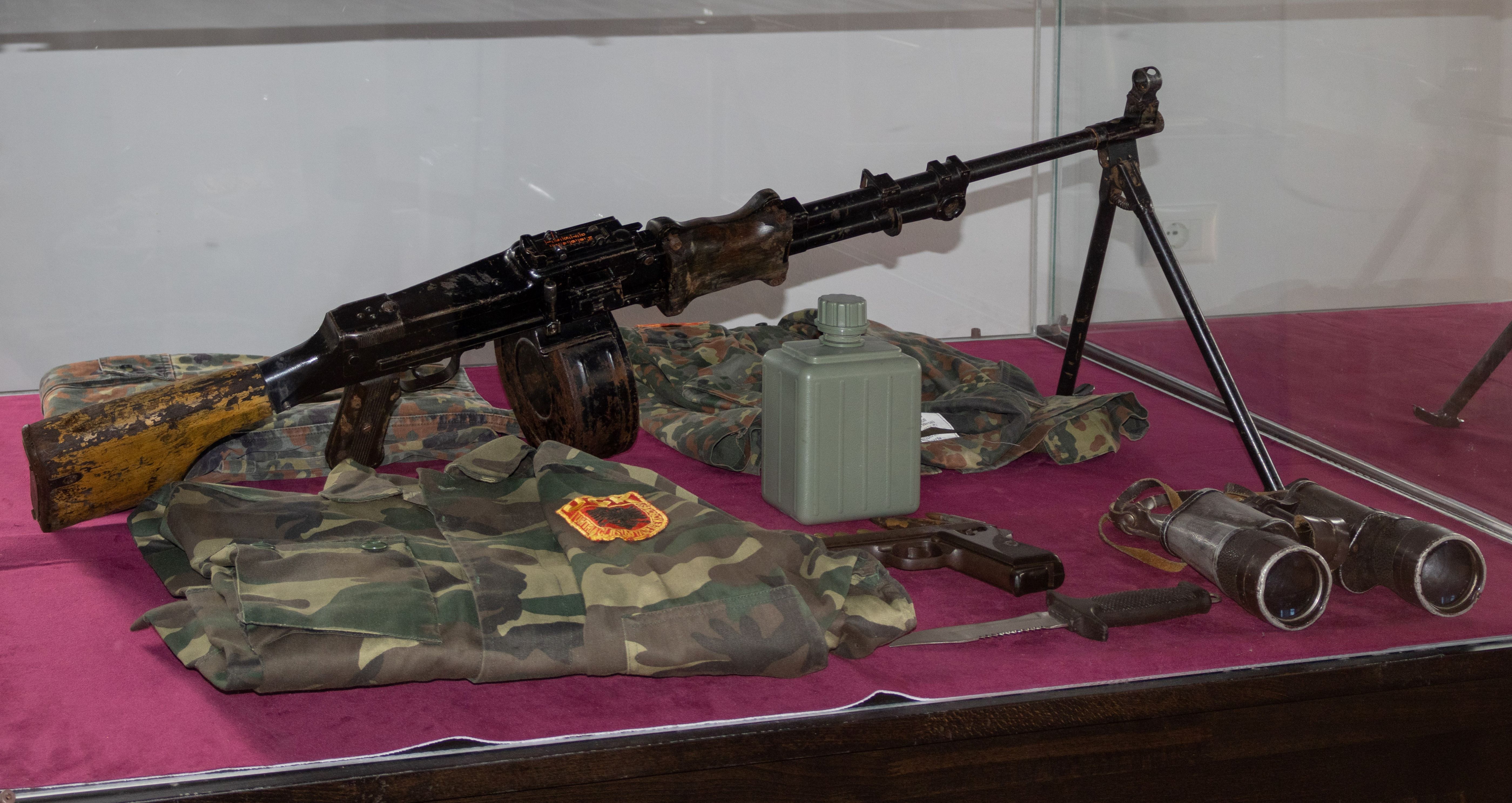
Museum at the Martyrs' Memorial in Morina. Photo: Afrim Ejupi/BIRN
The complex was established on July 7, 2021, thanks to the efforts of the citizens of Morina, the families of the martyrs, and their friends. Despite appealing for help from various institutions, the citizens did not receive any assistance, so they constructed the complex themselves. Since its establishment, the museum has never been visited by officials.
The complex, which honors Shkëlzen Syla, Muhamet Ukshini, Sylejman Abdyli, Blerim Ukshini, Arben Ukshini, Nezir Elezi, Ahmet Pulatani, and Ymer Bytyçi, who died defending Morina, is housed in a single room. In addition to the mine-thrower, it contains life-size photos of the martyrs and some of their possessions, including uniforms, equipment, and rifles. The martyrs, who were originally buried in the Gjakova Cemetery, have been reburied in front of the museum.
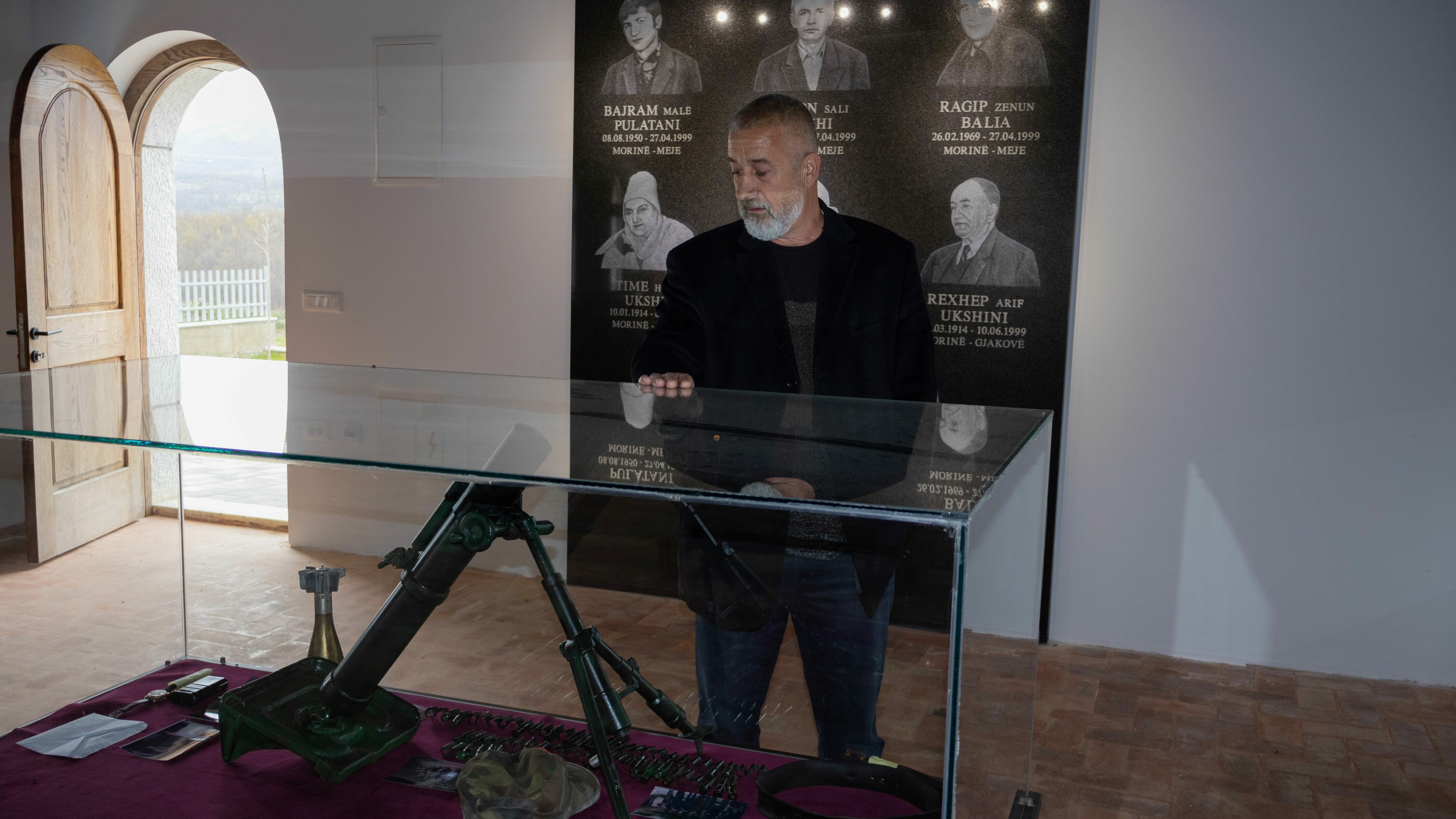
Sylejman’s brother Ismajl Abdyli. Museum at the Martyrs' Memorial in Morina. Photo: Afrim Ejupi/BIRN
Unfortunately, there is no set schedule for when the museum is open. In order to visit, interested parties must call beforehand, as no one is present at the museum during the day. Someone is paid 100 Euros a month to be a museum guide here, but this person is unable to travel to the museum because they have another job and live too far away.
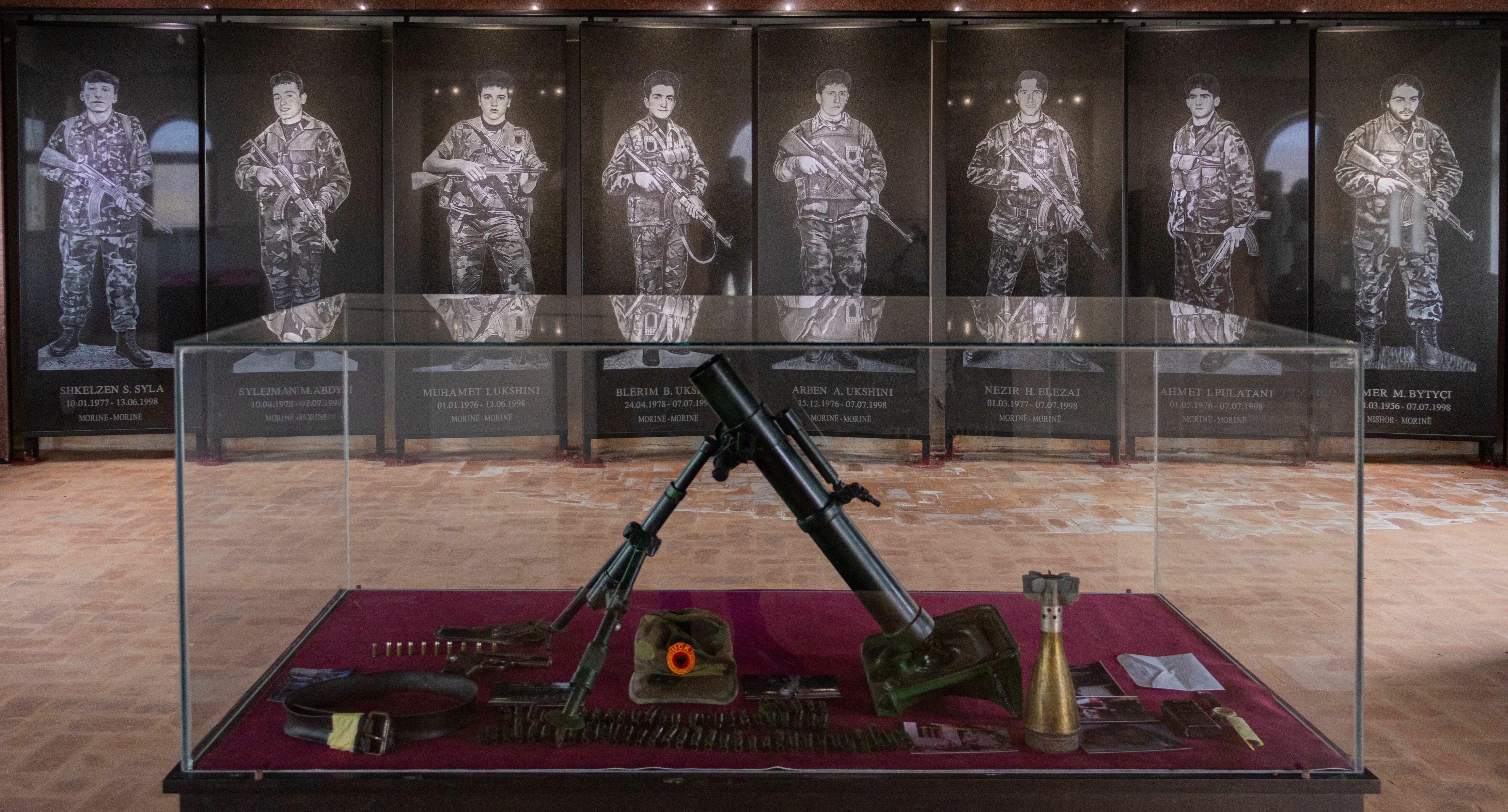
Museum at the Martyrs' Memorial in Morina. Photo: Afrim Ejupi/BIRN
There are also no written descriptions in Albanian or English, and the guide does not speak English. The residents of Morina are planning to expand the museum, develop display labels in English and Albanian, and create a promotional video that will help attract visitors.
The Berisha Family Museum
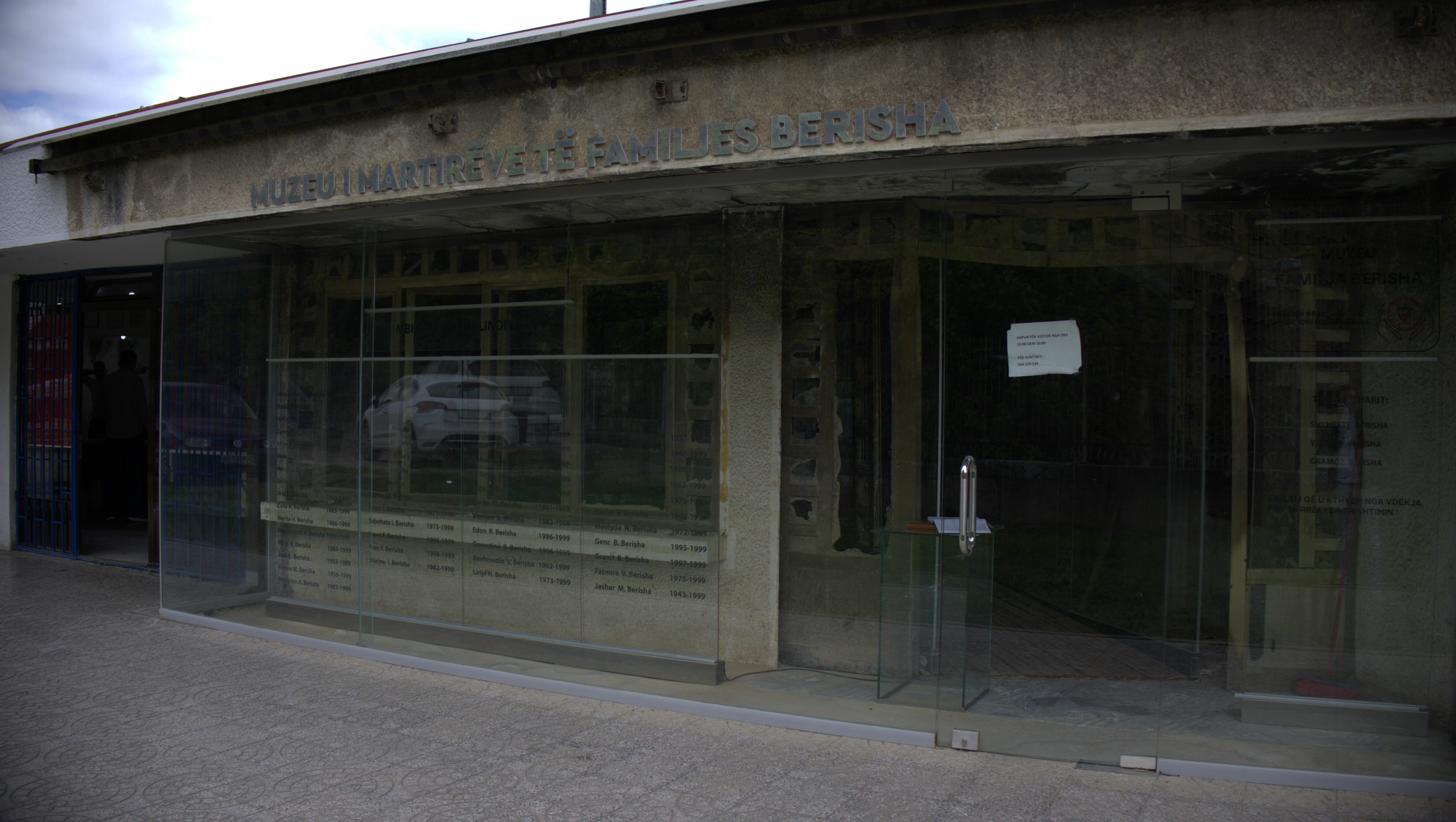
The Berisha Family Museum, Suhareka. Photo: Afrim Ejupi/BIRN
Address: Qendra Zejtare 1 Therandë XK, M25, 23000
Opening hours: Call in advance, +383 44 229 234
On March 26, 1999, Serb police officers forced the 52 members of the Berisha family inside a restaurant in Suhareka and fired machine guns at them. They then loaded their bodies onto trucks and transported them to a mass grave. In total, 49 people were massacred. Three family members survived by pretending to be dead and then jumping from the moving trucks.
Today, the Muzeu i Martirëve të Familjes Berisha [The Berisha Family Museum] is located in the pizzeria where the 49 members of the Berisha family were killed. The museum is run by Hysni Berisha, a family member of the victims. Hysni Berisha testified on behalf of his family at the Hague at the trial of Slobodan Milosevic, Milutinovic et al., and Vlastimir Djordjevic, as well as in Belgrade at the trial of the Serb police officers responsible for the massacre.
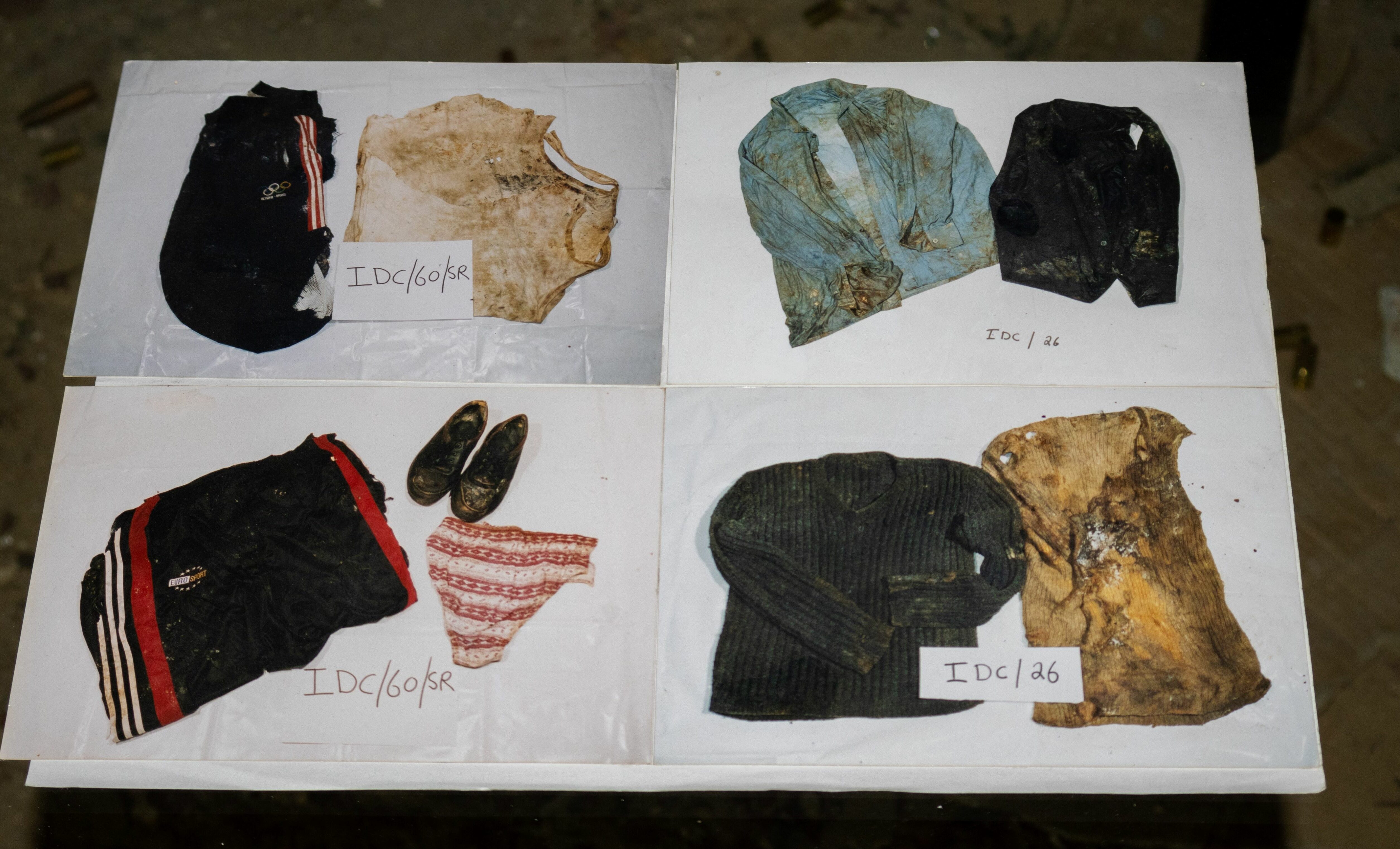
The Berisha Family Museum, Suhareka. Photo: Afrim Ejupi/BIRN
Berisha is well-informed and eager to share the story of his family with visitors, but he is a volunteer, so you must call in advance in order to schedule a time to visit the museum. It is important to note, however, that he does not speak English and there are no written descriptions or English translations in the museum.
Written descriptions would make the museum more accessible to foreign visitors. They could also explain the role that the massacre played in the conviction of Serb war criminals. The massacre was used directly in the prosecution of Vlastimir Dordevic, who was found guilty of this massacre at The Hague. It also led to the conviction of four Serb police officers, Radojko Repanovic, Sladan Cukaric, Miroslav Petkovic and Milorad Nisavic. This information, along with the story of what happened to the family, is currently not displayed in the museum.
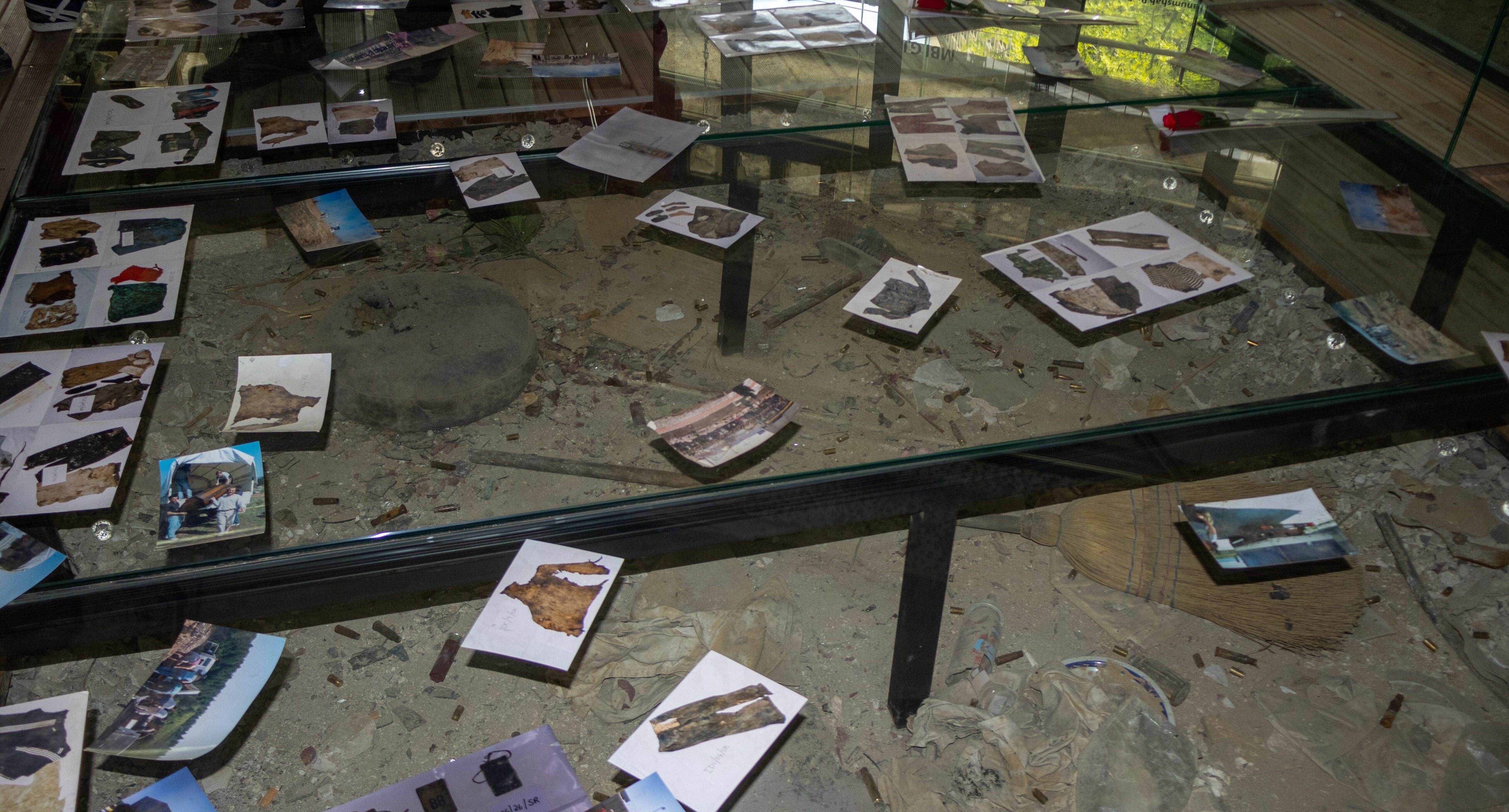
The Berisha Family Museum, Suhareka. Photo: Afrim Ejupi/BIRN
However, not everything in the museum needs an explanation. The walls are covered in bullet holes. On the ground, next to the bullet cartridges that lay scattered, there is an abandoned baby bottle. It must have belonged to Eron Berisha or Redon Berisha, neither of whom were even two years old. Haunting photos of the exhumation process and some of the clothing found on the bodies of the murdered Berisha family members have been added to the displays. One does not need to speak Albanian to understand the tragedy that took place here.
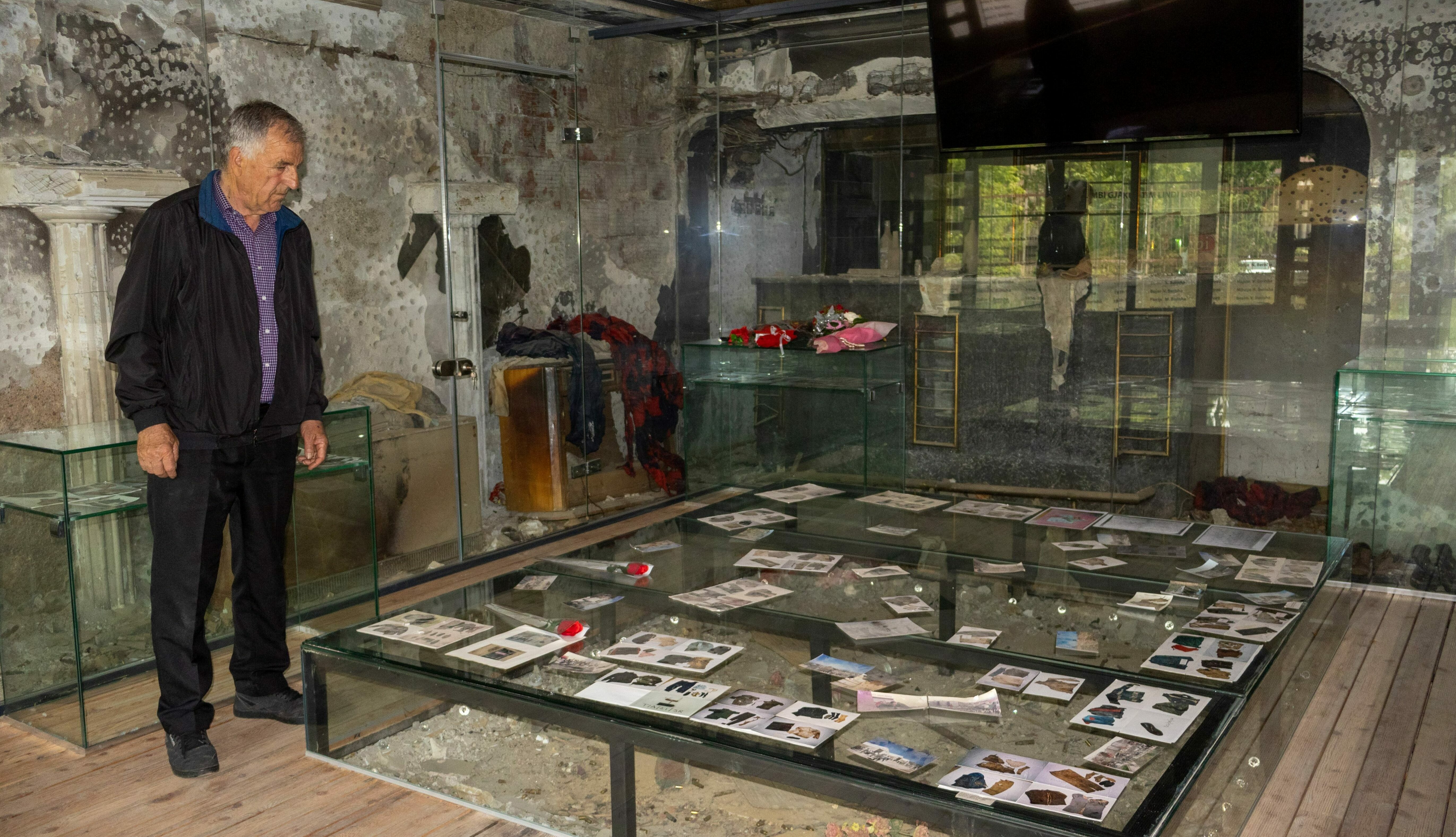
The Berisha Family Museum, Suhareka. Photo: Afrim Ejupi/BIRN
While some of the bodies were found in Prizren and Batajnica, 20 of the bodies are still missing. The pizzeria serves as a physical reminder of the massacre of the Berisha family.
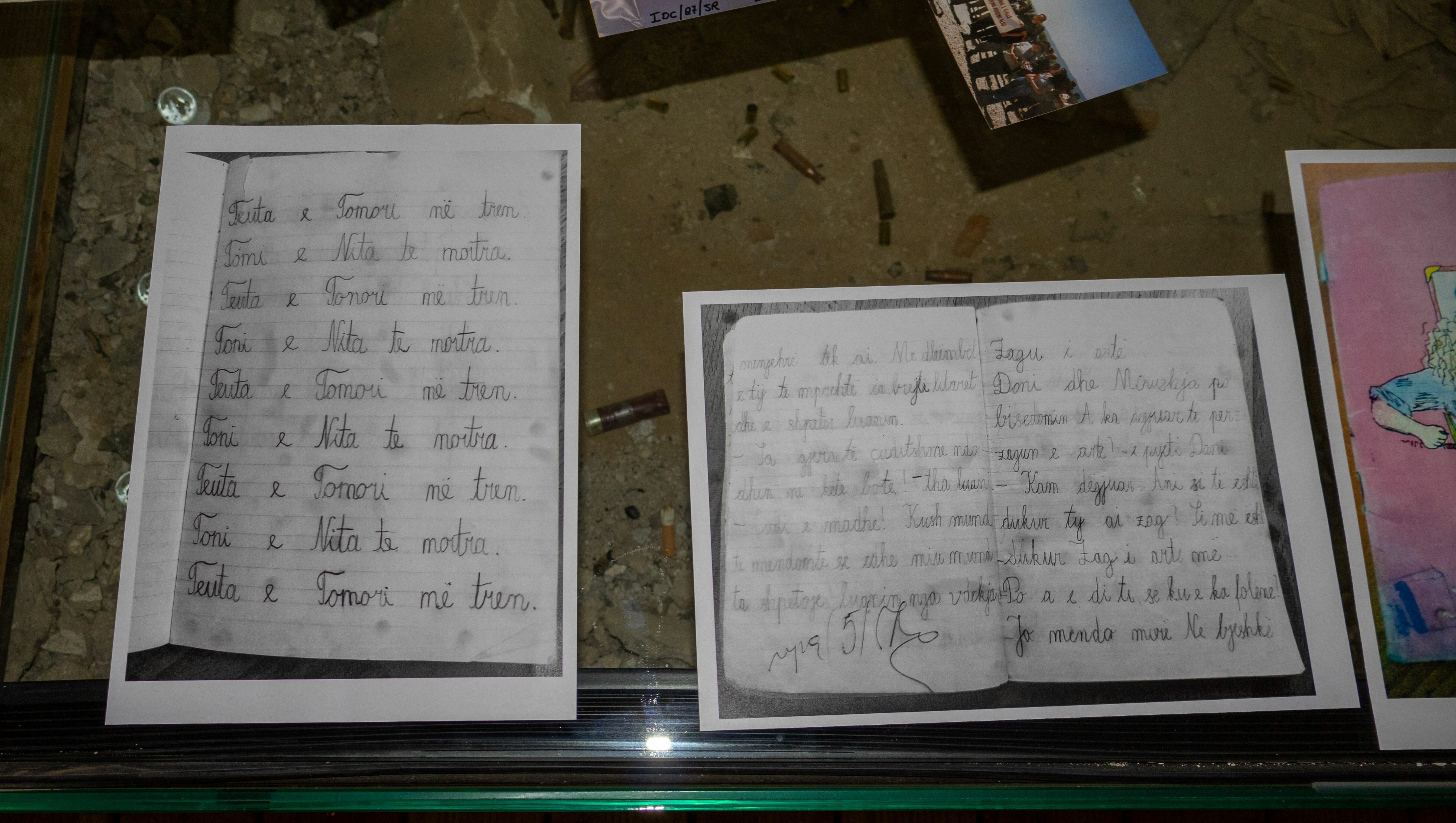
The Berisha Family Museum, Suhareka. Photo: Afrim Ejupi/BIRN
The Qerkezi, Berisha, and Morina families are not alone in their suffering. Hundreds of families across Kosovo have lost loved ones. More than 13,000 people died or disappeared during the Kosovo War. The many stories of victims and survivors deserve to be preserved and presented in a prominent museum. It is only by understanding and remembering the tragedies of war that we can attempt to live out ‘never again’.
While these small museums strive to fulfill the vital job of documenting the war by documenting these tragedies and ensuring that future generations do not forget, they do not diminish the necessity for a national war museum. Instead, they remind us of the urgency to establish such a place. The need for a museum, akin to those found in other countries emerging from wars, remains immensely important to the people of Kosovo.





